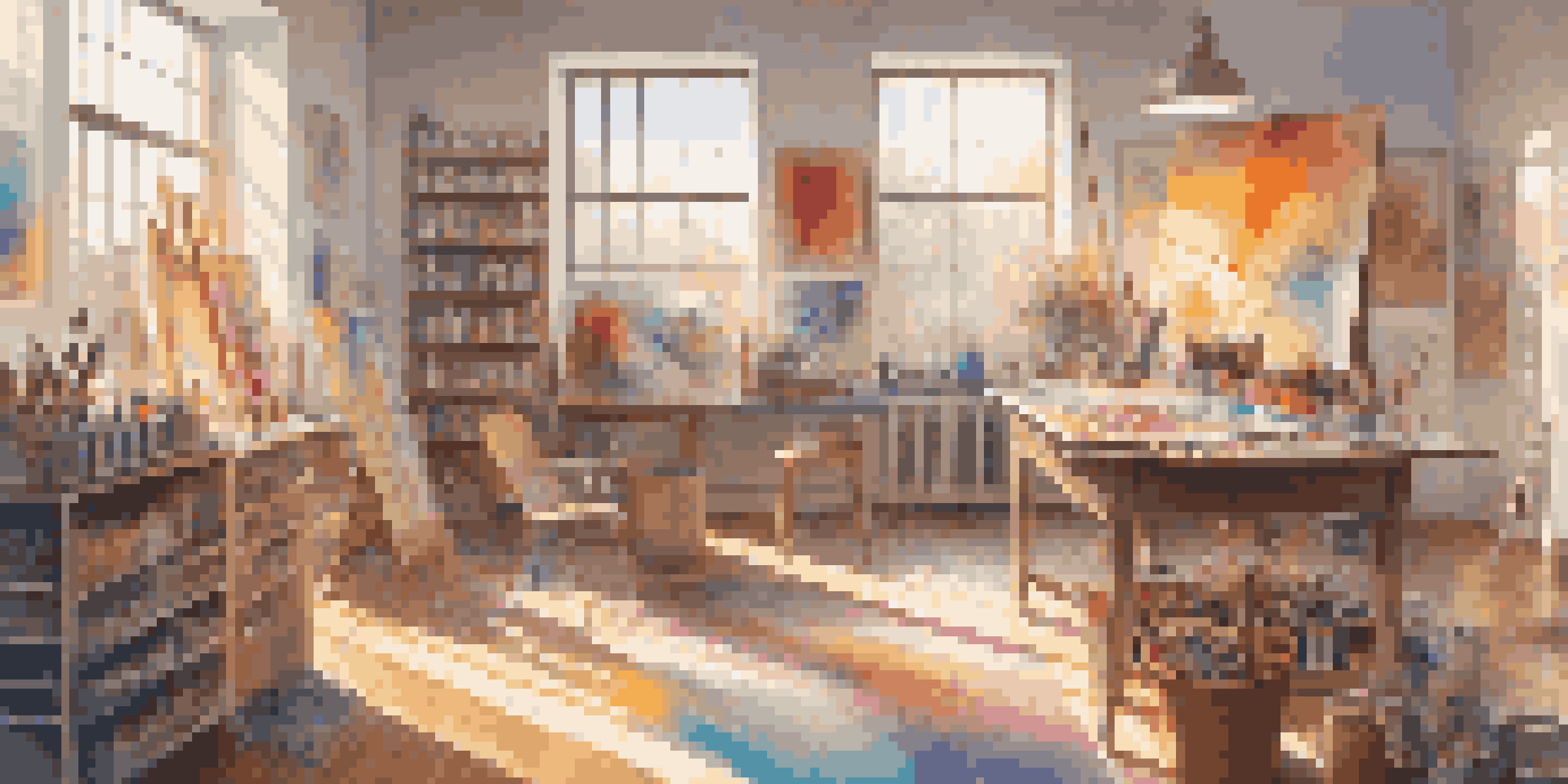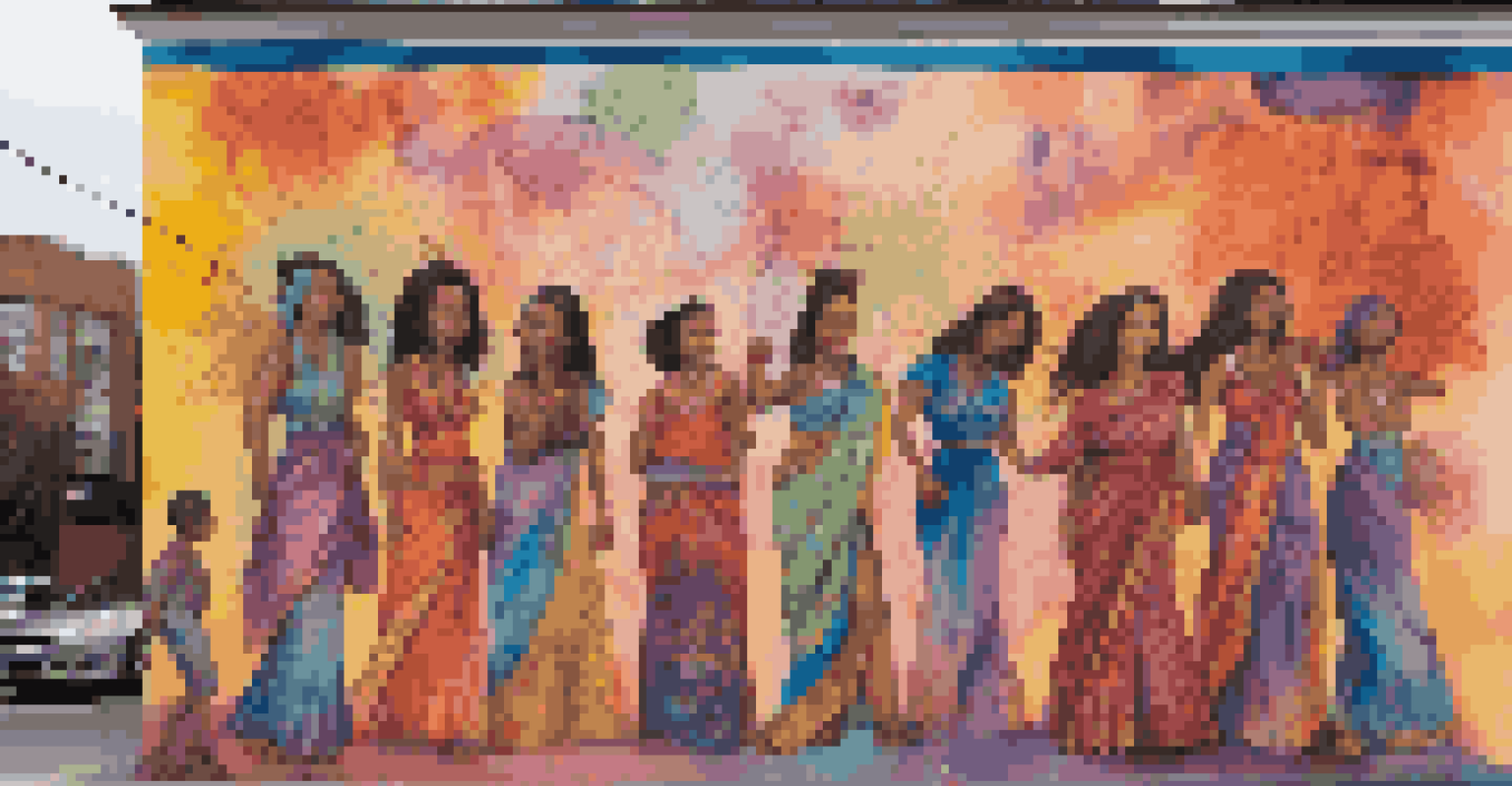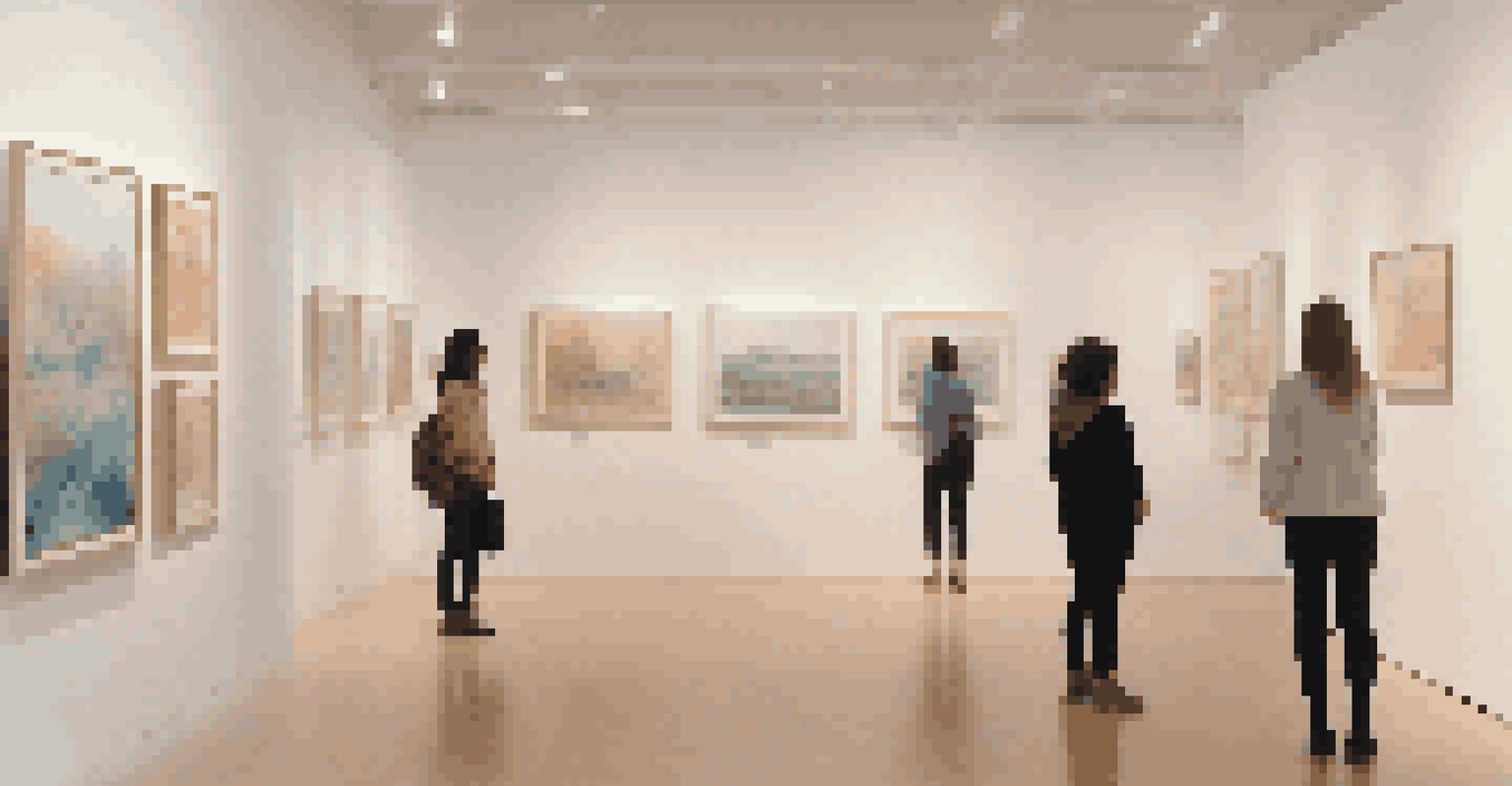Gender and the Language of Art: Communication Styles

Understanding Gender in Artistic Expression
Art has always been a reflection of the society in which it exists, and gender plays a significant role in shaping this expression. From the brush strokes of a painter to the themes explored in literature, the influence of gender can often be observed. Recognizing how gender affects artistic expression helps us appreciate the diverse perspectives that contribute to the art world.
Art is the most beautiful of all lies; it is a mirror that reflects our complex identities and societal structures.
For instance, male and female artists may choose different subjects, techniques, or styles, often influenced by societal norms and expectations. This difference can be seen in the prevalence of certain themes across genders, such as women focusing more on domestic life and men on grand historical narratives. These choices aren’t just personal; they reflect broader cultural narratives about gender roles.
By understanding these distinctions, audiences can engage with art more deeply, recognizing the layers of meaning behind each piece. This awareness also fosters a more inclusive environment where diverse voices are celebrated and valued, allowing for a richer dialogue within the art community.
Communication Styles: Gender Perspectives
Communication styles can vary significantly between genders, influencing how artists convey their ideas. Research has shown that women often adopt a more collaborative and relational approach, while men may lean towards assertiveness and directness. This divergence can manifest in the way art is created and interpreted, shaping the viewer's experience.

For example, female artists might emphasize storytelling and emotional resonance in their work, aiming to connect on a personal level. In contrast, male artists might prioritize bold statements or conceptual frameworks that challenge the viewer's perceptions. Understanding these styles helps us grasp the underlying messages within the art and appreciate the artist's intent.
Recognizing these differences in communication can enhance our discussions about art, inviting more meaningful exchanges. It encourages us to look beyond traditional interpretations and embrace diverse viewpoints, enriching our collective understanding of artistic expression.
Art Movements and Gender Influence
Throughout history, various art movements have been influenced by gender dynamics, shaping the direction of artistic trends. The Feminist Art Movement, for instance, emerged in the late 20th century to challenge the male-dominated art world. It highlighted the importance of female experiences and sought to redefine artistic norms, leading to a greater recognition of women in art.
Every artist dips their brush in their own soul, and paints their own nature into their pictures.
Similarly, movements like Abstract Expressionism showcased male artists who often emphasized individualism and emotional intensity. This focus on personal expression may be linked to societal expectations placed on men to exhibit strength and autonomy. By examining these movements through a gender lens, we can better understand the cultural context in which they arose.
Exploring the intersection of art movements and gender allows us to appreciate the ongoing evolution of artistic expression. It reminds us that art is not only a product of individual creativity but also a reflection of societal changes and dialogues about gender roles.
Gender Stereotypes in Art Perception
Stereotypes about gender can influence how we perceive and evaluate art. Often, artworks created by women may be undervalued or dismissed based on preconceived notions about their abilities. This bias can lead to a significant underrepresentation of female artists in galleries and exhibitions, perpetuating the cycle of inequality.
For instance, a painting created by a male artist might be regarded as a masterpiece, while a similar work by a female artist could be criticized for lacking depth or complexity. This disparity can discourage female artists from pursuing their craft, impacting the diversity of voices within the artistic community. Challenging these stereotypes is crucial for fostering a more equitable art world.
By actively questioning our biases and expanding our definitions of what constitutes valuable art, we can create a more inclusive environment. This shift not only benefits artists of all genders but also enriches our cultural landscape by embracing a broader spectrum of artistic expression.
The Role of Intersectionality in Art
Intersectionality acknowledges that individuals experience multiple identities simultaneously, such as race, gender, and class, which can impact their artistic expression. This concept is vital in understanding how different backgrounds shape the narratives and styles of artists. For example, a Black female artist may draw from both her racial and gender experiences, creating art that resonates on multiple levels.
Art created through the lens of intersectionality often challenges dominant narratives, offering fresh insights into societal issues. By incorporating diverse perspectives, artists can address complex themes like identity, privilege, and oppression, fostering empathy and understanding among audiences. This approach encourages a more nuanced appreciation of art, moving beyond simplistic interpretations.
Embracing intersectionality in art not only enriches the dialogue but also promotes inclusivity. It empowers artists to explore their multifaceted identities, resulting in a vibrant and dynamic art scene that reflects the diversity of human experience.
Art as a Tool for Gender Advocacy
Art has long been used as a powerful tool for advocacy, especially in the realm of gender equality. Through their work, artists can raise awareness about gender issues, challenge stereotypes, and inspire change. Whether it's through provocative installations or poignant performances, art has the ability to spark conversation and motivate action.
For example, street art often serves as a medium for expressing dissent against gender-based violence or discrimination. Artists like Banksy and Judy Chicago utilize their platforms to highlight social injustices, creating visual narratives that resonate with audiences. This form of activism not only amplifies marginalized voices but also encourages viewers to reflect on their own beliefs and biases.
By recognizing the role of art in gender advocacy, we can appreciate its potential to drive social change. Supporting artists who tackle these vital issues contributes to a more equitable society and fosters a culture of empathy and understanding.
The Future of Gender and Art Communication
As society continues to evolve, so too will the conversations around gender and art. The emergence of digital platforms has opened new avenues for artists to share their work and engage with diverse audiences. This technological shift allows for more inclusive participation, enabling voices that were historically marginalized to gain visibility.
Moreover, the conversation about gender in art is expanding to include non-binary and gender-fluid perspectives, enriching the dialogue further. This inclusivity encourages a broader understanding of identity and expression, challenging traditional notions of gender. As more artists embrace these identities, we can expect to see innovative approaches that reflect a wider range of experiences.

Looking ahead, it's essential to continue fostering an environment that values diversity in artistic expression. By encouraging open dialogue and supporting artists from all backgrounds, we contribute to a vibrant future for art that resonates with everyone, regardless of gender.